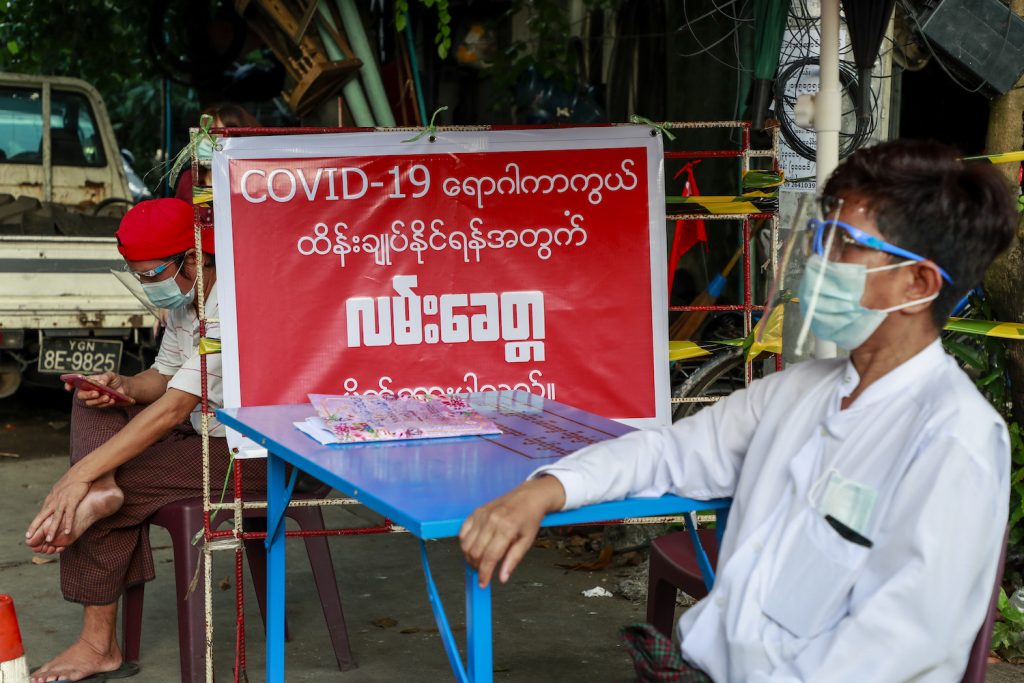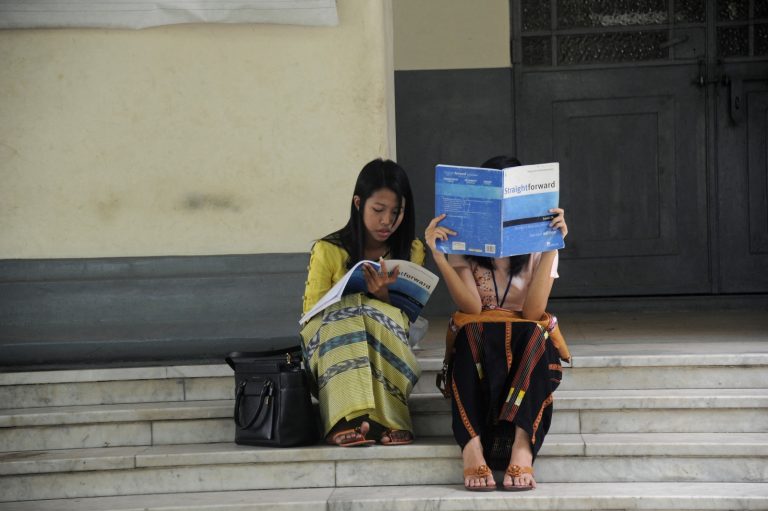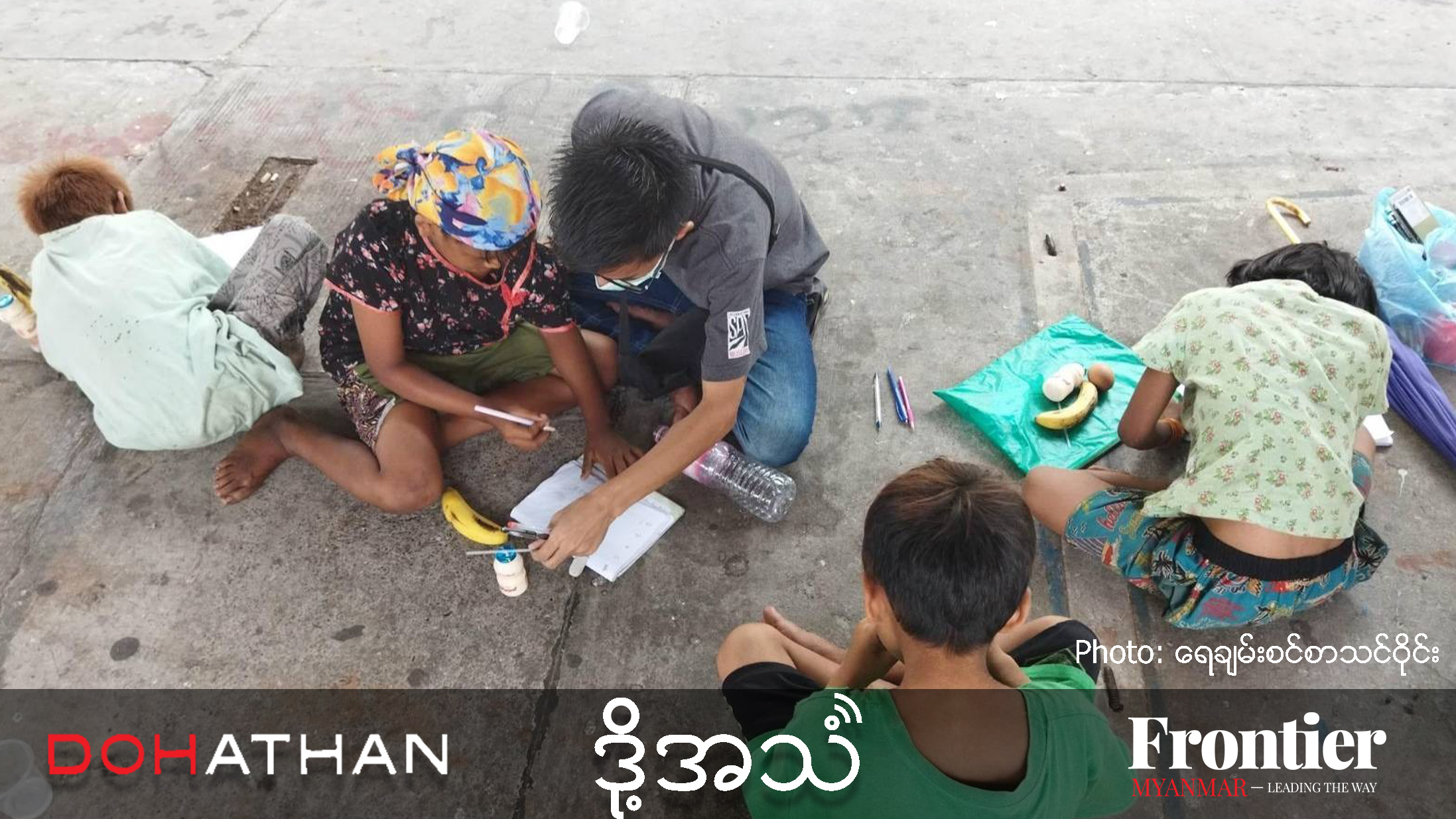The explosion of COVID-19 cases throughout the country since the second wave of infections emerged in mid-August is dealing a heavy blow in key sectors and the worst may not be over.
By SITHU AUNG MYINT | FRONTIER
The second wave of COVID-19 sweeping across Myanmar has infected many people in different locations and sent the death toll soaring. In its attempt to control the pandemic, the government has deployed considerable human and financial resources. The surge in case numbers since mid-August has had a much more significant effect on the country, including its economy, politics, and education and health sectors.
As of October 5, the national COVID-19 tally stood at 18,781, including 444 deaths. The numbers are vastly different from the first wave, which began when the first COVID-19 cases were reported on March 23. A total of 375 cases were reported over the next five months, many of them returnees or travellers from abroad.
Numbers began to explode after the nation’s first community transmission case in nearly a month was confirmed in a bank employee in the Rakhine State capital, Sittwe, on August 16. By August 29, the number of cases had doubled, to 749. Since then, the number of infections has doubled every seven or eight days, and by September 29 there were 12,427 cases.
The infection rate during the first wave was 2.5 persons a day, but since the second wave began it has increased by 100 times to an average of 270 cases a day.
Another significant development is that the coronavirus has been spreading in many locations simultaneously, rather than just one or two places. Records for the seven days to September 28 show that new infections of the virus were detected in 69 townships on September 19, 65 on September 20, 70 on September 21, 85 on September 22, 69 on September 23, 76 on September 24, 54 on September 25, 77 on September 26, 88 on September 27 and 85 on September 28. These numbers are concerning because they show that infections have been detected in more than one quarter of Myanmar’s 330 townships.
The figures show that the second wave poses a big challenge to Myanmar, especially to the health sector. The Ministry of Health and Sports responded to the first wave by acquiring testing devices, protective clothing and other equipment and by transforming the civil service training centre at Phaunggyi on Yangon’s northern outskirts into a treatment facility with the potential to accommodate 2,000 patients. It was initially modified to accept 500 patients, but was expanded as the number of cases increased. With the number of cases rising by between 600 and 800 a day, more beds are needed in hospitals and demand for quarantine facilities has grown sharply. Healthcare workers from throughout the country and thousands of volunteers have been deployed in Yangon Region and Rakhine State to ease the workload on over-burdened medical personnel.
Testing is essential to help prevent the spread of the disease but capacity has been limited to 5,000 people a day. The delivery of hundreds of thousands of antigen test kits from South Korea will contribute to the efforts to control and contain the virus. However, the virus continues to spread and the death toll will rise.
The economy has also taken a big hit from the second wave. The infection and death rates were low during the first wave thanks to the way it was handled by the government and its impact on the economy was not as severe as in other countries. In its Wellness in Worrying Times report released last month, the Asian Development Bank listed Myanmar as one of three ASEAN countries with growth rates that had not fallen below zero and forecast a growth rate for the nation this year of 1.8pc. Given the second wave, however, that figure will almost certainly be revised downwards.
During the first wave, international commercial flights were banned, but the second wave saw the grounding of all domestic flights and highway bus services were also halted. Restrictions imposed in response to the second wave also resulted in the closure of all factories, including cut-make-pack (CMP) garment enterprises. Ahead of the closure of factories, the employees of almost all private sector companies, including media organisations, were instructed to work from home, and only businesses regarded as being essential were allowed to continue operating. All of these moves will have a big impact on the economy.
COVID-19 continues to spread rapidly. No one knows when it can be brought under control so that factories and other workplaces deemed non-essential will be able to resume operations. It will be extremely difficult for the Myanmar economy to achieve the ADB’s forecast of 6pc growth next year.
Campaigning for the November 8 general election has also been curtailed by COVID-19 regulations limiting crowd sizes. No direct campaigning at all is permitted under stay-at-home orders imposed by the Ministry of Health and Sports in about 70 townships in six states and regions, a decision affecting 250 constituencies, or about 21pc of the total.
With COVID-19 spreading rapidly and the death toll on the rise, it may be difficult to hold the election on November 8. Leaders of political parties are urging their supporters to guard their health so they will be able to vote on election day.
Meanwhile, education has also been affected by the second wave, because schools that had only just reopened had to close again.
The outlook is grim. Until the second wave is brought under control, Myanmar can expect to continue to suffer the adverse affects of the pandemic on health, the economy, education and politics for some time.







